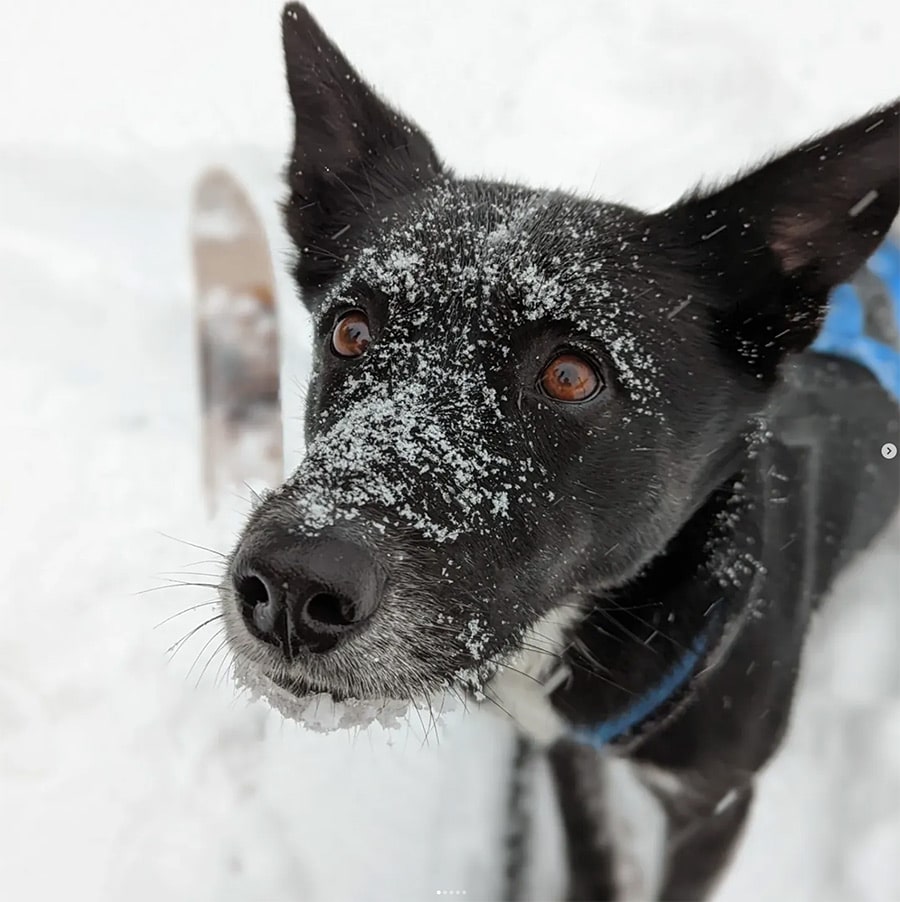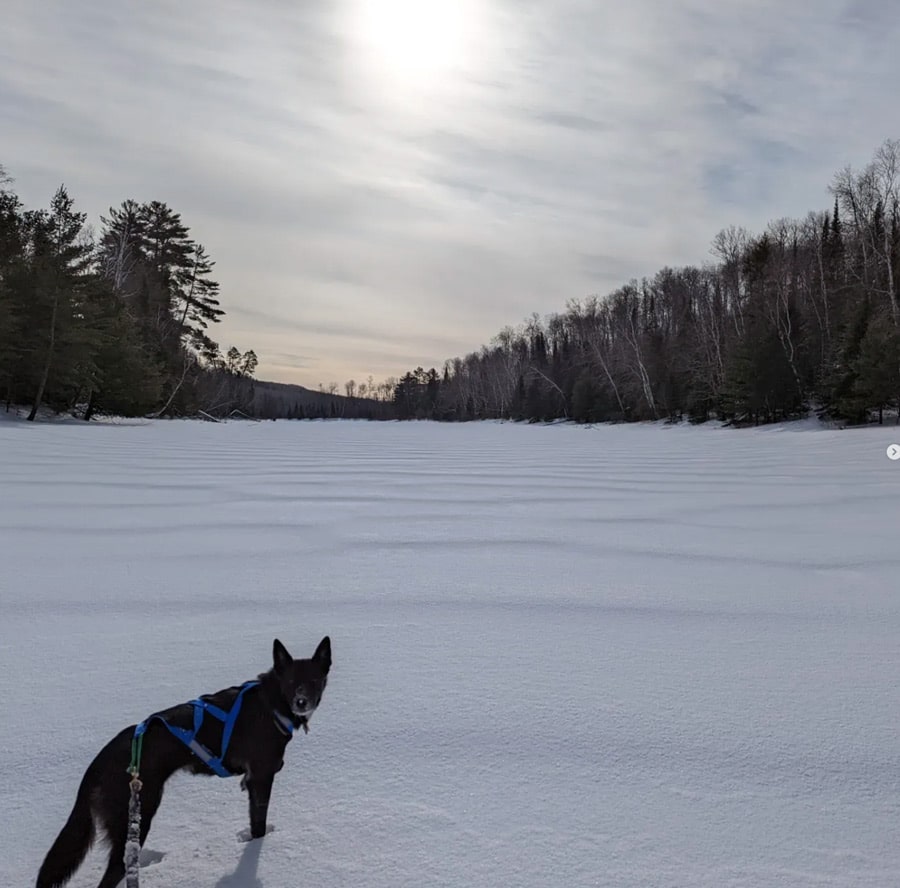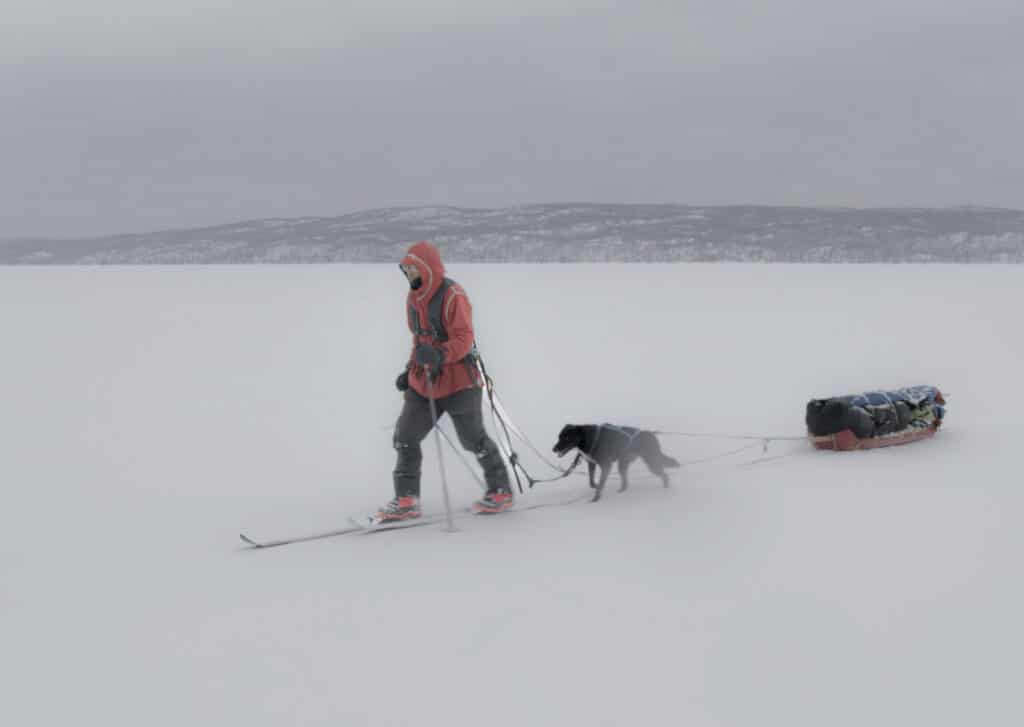
Emily Ford’s winter trek across the Boundary Waters was full of cold and slush, wind and ice, and it was all worth it. Ford says she’d cross a thousand miles of wilderness to help more kids experience the outdoors, and her fundraising as part of the trip will make sure some do.
Ford raised more than $5,000 through the 200-mile trip for the Friends of the Boundary Waters Wilderness to send young people from underserved backgrounds to the Boundary Waters. She says such experiences can make a huge difference.
“I often think about the trajectory of my own life and how it could have changed if I would have experienced the outdoors in this way when I was much younger. Don’t get me wrong, I am very satisfied with my life, but it could have been different,” Ford says.
“I want that opportunity to be available for other kiddos. It could change everything for one kid.”
Border crossing
The journey began Feb. 11 at Crane Lake and, over the next four weeks, took Ford and her trusted canine companion, Diggins, more than 200 miles east to the Pigeon River. The trip ended at South Fowl Lake, short of her original objective, because the ice had already broken up. She has no regrets about missing the last 30 miles or so to Lake Superior, saying she met her goal of traversing the entire Boundary Waters, and the experience was richly rewarding.
Ford and Diggins were resupplied twice along the route by supporters, and they were able to spend one night indoors at a friend’s cabin along the Seagull River. Much of the time, though, the trekker and her dog were on their own, facing the difficulties and experiencing the incredible solitude. Many days on the large open border lakes subjected them to significant wind, so she savored the moments when it was calm.
“Anytime that the sun was out and there wasn’t wind was a beautiful moment,” Ford says. “If the day was nice like that, at our breaks, I would lay on top of my pulk bag and take a nap in the sun.”
In addition to the wind, there was also a lot of deep snow and slush that slowed them down. Each time they ended up in slush, they would have to find a way around it, and then stop to scrape it off her skis.
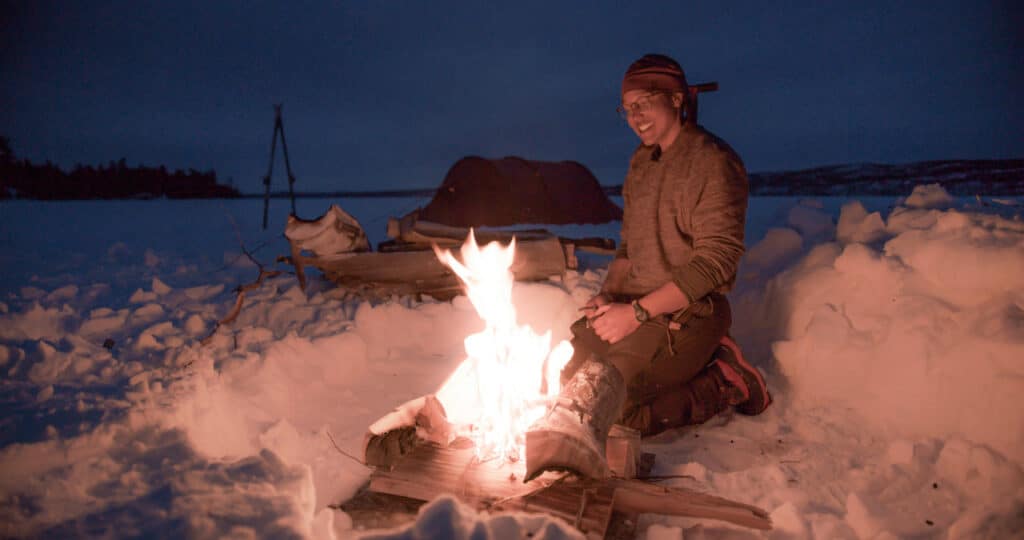
Cold competency
Before the trip, Ford spent a few weeks working and training at Wintergreen Lodge in Ely, which provides dogsledding and winter camping trips in the Boundary Waters, and is operated by explorers Paul and Sue Schurke. She said the time at Wintergreen paid off in helping her see how to manage the cold.
“For most of us, the cold really bogs down our brains and rational thinking. It was good to learn ways to think clearly and make good decisions,” she said.
That clear thinking was important, especially during one particularly dangerous episode. She was camped near Curtain Falls, tired from a long day and a difficult search for a portage earlier, when she fell through thin ice into water up to her chest.
“My brain does a good job of slowing down and being really calm,” she told the Star Tribune. “Turn around. Get your elbows on the ice. Get snow on you to take off the water. Get to tent to change.”
She got changed, found more firewood, and dried her wet clothes over the fire until 4 a.m. the following morning. And kept skiing.
While Ford and Diggins were often facing the wilderness alone, they did have occasional company — both wild and human. She said a pair of crows followed them for a couple days, and they saw a bald eagle and a fisher. In fact, they saw more people than wildlife, including several dogsled mushers.
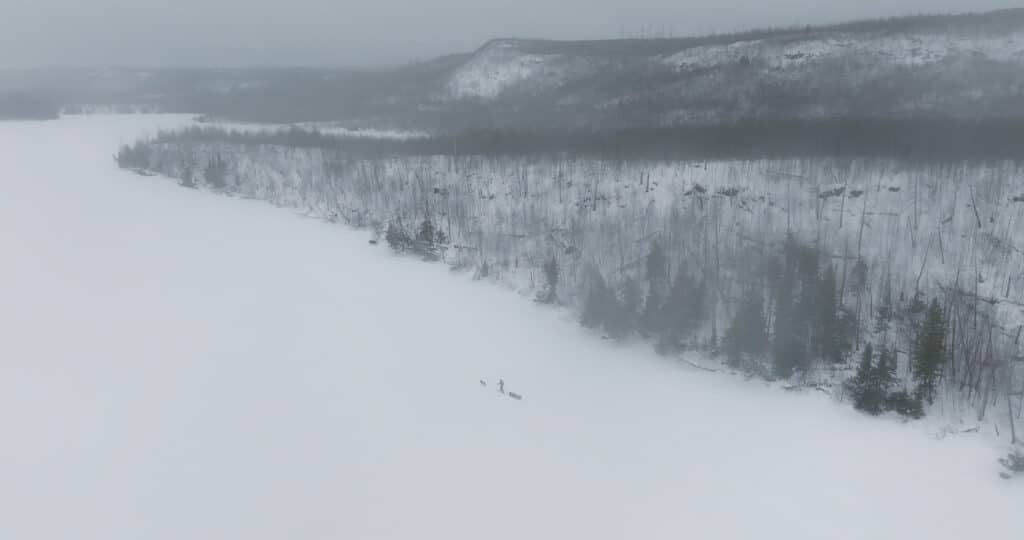
Partner on the path
The mushers were out running their routes, and one of them brought Ford and Diggins a resupply. Ford had hoped to skijor behind Diggins much of the way, letting the dog help her along, but found the snow was mostly too deep for the dog. Ford herself was left to break the trail.
Diggins actually spent the first few years of her life pulling a sled. Ford says that makes her beloved dog, named after Minnesotan Olympic three-time medalist Jessie Diggins, a perfect partner. “She is a lead dog on a team so she has to be smart with her own decisions,” Ford says. “She also has a deep pack mentality so she knows that it’s best for us to stay together and to watch out for each other.”
Ford’s experience at Wintergreen also helped her be a good partner for Diggins. “It was also great to see how to deal with dogs in the cold. What to look for and when to stop and take care of them,” Ford says.
Photo: @emilyontrail Instagram Photo: @emilyontrail Instagram Photo: @emilyontrail Instagram
End of the trail
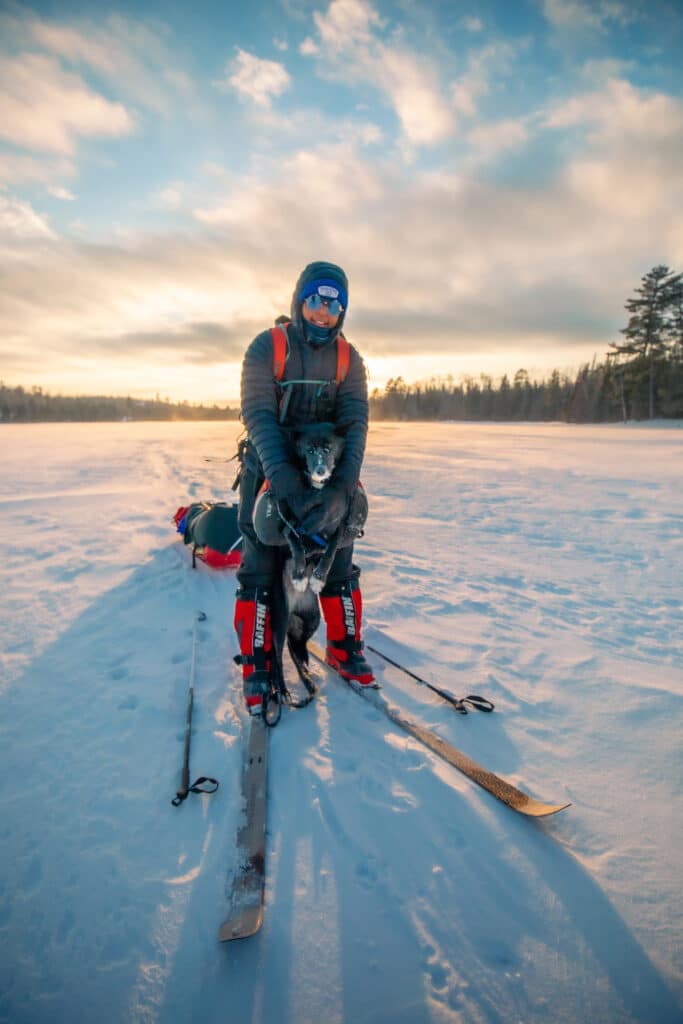
The trip came to its end on March 11. The water was open on the Pigeon River, and skis weren’t going to get Ford any farther. The trip was over, except for getting home. They hitched a ride, and made an important stop.
“The folks who picked me up happened to be going to a dinner so I ate five burgers I guess,” Ford fondly remembers. “They were delicious and worth it.”
Back in Duluth, Ford continues to share photos and memories from the trip on her popular Instagram account, where she has more than 15,000 followers. Along with raising money for several young people to visit the Boundary Waters, she inspires many more to seek out and protect wild places. As a Black woman, she serves as an important role model.
“Emily’s story is inspiring, to say the least,” says Pete Marshall, Communications Director with Friends of the Boundary Waters Wilderness. “Both for the incredible adventure she has undertaken and for her message of inclusivity and inviting people of all backgrounds to explore and enjoy the great outdoors. Ultimately, the future of the Boundary Waters depends on people experiencing, falling in love with the area and protecting this special place. The wilderness depends on people.”
More information:
- Emily Ford’s Instagram account
- Interview – WTIP Boundary Waters Podcast
- For Duluth adventurer, 210-mile winter BWCA trek ends abruptly, but well – Star Tribune
- Emily Ford to Ski Across the Boundary Waters – Friends of the Boundary Waters Wilderness



